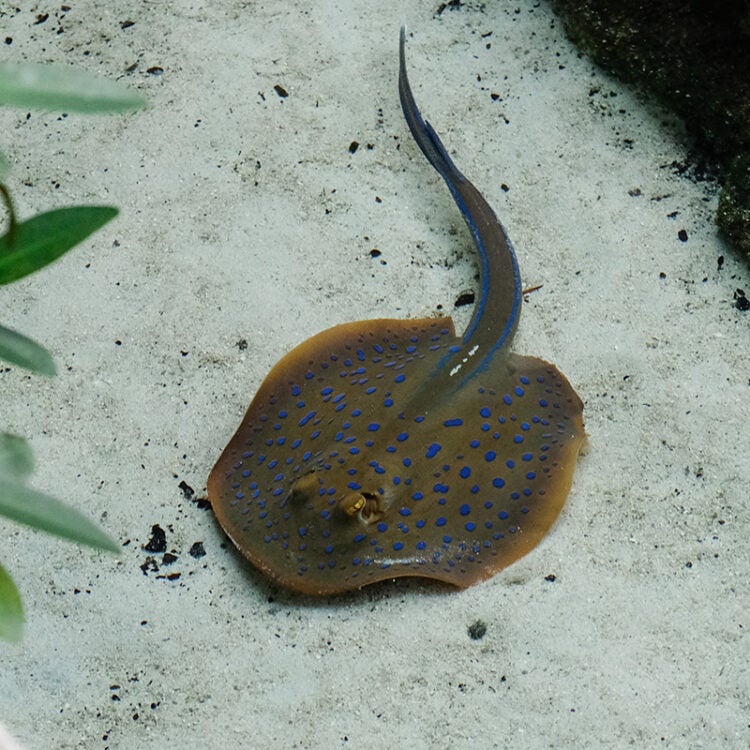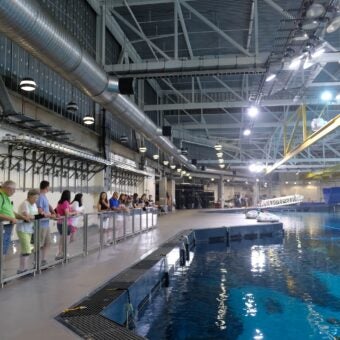-
Size
14 inches (35 cm) -
Diet
Mollusks, worms, shrimps, and crabs -
Range
Indo-Pacific -
Habitat
Sandy bottoms and near coral reefs
Physical Characteristics
- The body is flattened and round-shaped, with a tail as long as its body. Venomous spine on tail.
- Coloration is brown to yellow-brown with bright blue spots on the dorsal surface. The ventral surface is off-white.
- Maximum length of 2 ft (0.6 m).
Animal Fun Fact
Unlike many ray species, the blue-spotted stingray does not usually bury itself in the sand.
Diet / Feeding
- Feeds on mollusks, worms, shrimps, and crabs.
Range / Habitat
- Indo-West Pacific: Persian Gulf, Red Sea and East Africa to the Solomon Islands, southern Japan, and around northern Australia.
- Typically found on sandy bottoms near coral reefs at depths of 3-65ft (1-20m).
Reproduction & Growth
- Ovoviviparous species. The embryo is nourished first by yolk and later by indirectly absorbing uterine fluid. Females give live birth to a litter of one or two pups.
Conservation Status
- “Least Concern” on the IUCN Red List.
Additional Information
- Also referred to as a “ribbontail ray.”
- Unlike many ray species, the blue-spotted stingray does not usually bury itself in the sand.
- Not an aggressive species, although its venomous spine may deliver a painful sting.







